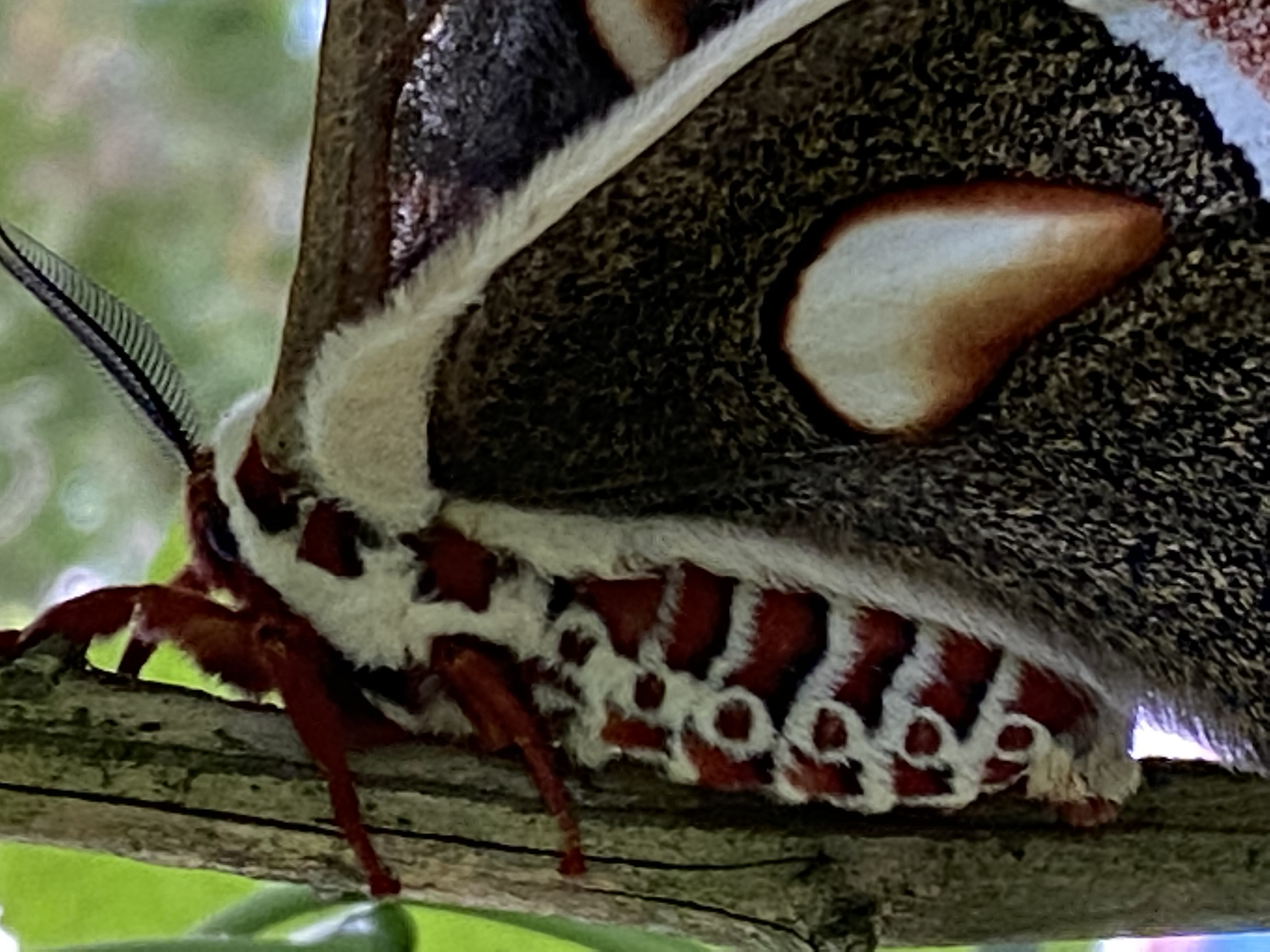Giant Silk Moth – Close-up – Photo: L. Weikel
Giant Silk Moth
What an amazing discovery! M & T discovered this Giant Silk Moth earlier today, hanging out on one of their cedar trees. Technically known (but only to its most intimate familiars) as Hyalophora Cecropia, this gorgeous creature is somewhere within its vast two week adulthood.
That’s right. The world is graced with this beauty for a grand total of two weeks. And that’s only if it’s lucky enough not to be gobbled by a squirrel or some other predator.
The reason for its startlingly short span of glory is the somewhat disturbing fact that it has neither mouthparts that work nor a digestive system. I’m guessing this is nature’s way of bringing it into balance with the rest of the ecosystem after it devoured lots of leaves during its caterpillar stages. (And yes, it goes through a couple of caterpillar stages.)
It seems our winged beauty is destined to live a brief but intense adulthood comprised of being the fairest of them all, fluttering about in the magnificence of summer, releasing pheromones that attract suitors from miles around, having lots of sex, laying hundreds of eggs…and then shedding their mortal coil. And they do all of that without a bite to eat.
It’s a life cycle that engenders some contemplation.

Giant Silk Moth – Perspective – Photo: L. Weikel
Common – Really?
In the description of our friend Cecropia, it’s said that these massive moths (the largest in North America) are common. That’s hard to believe. How could something so amazing have escaped my perception all these years if it’s ‘common?’ Surely I need to hone my observation skills if this is the case.
I think I may recognize the stage of its life in which it’s a little black caterpillar. But I can’t be sure.
I’m just delighted that this one was discovered and I got the chance to admire it. Its tremendously lovely wings are obviously designed to ward off predators that might not want to tangle with an owl or whatever creature’s eyes the moth’s wings are supposed to look like. But even its body is gorgeous in its intricate perfection – not to mention the feathery antennae so adept at picking up those irresistible pheromones the females are known to float upon the ethers. Temptresses!
But it’s interesting to consider that their greatest beauty (at least in the eyes of us humans) are the equivalent of our 15 minutes of fame. They have two weeks. Fourteen days of amazing life spent doing all the things that Giant Silk Moths do – which escapades do not include eating.
Perhaps they’re too busy anyway.

Hyalophora cecropia – Playing Peekaboo – Photo: L. Weikel
(T-145)
